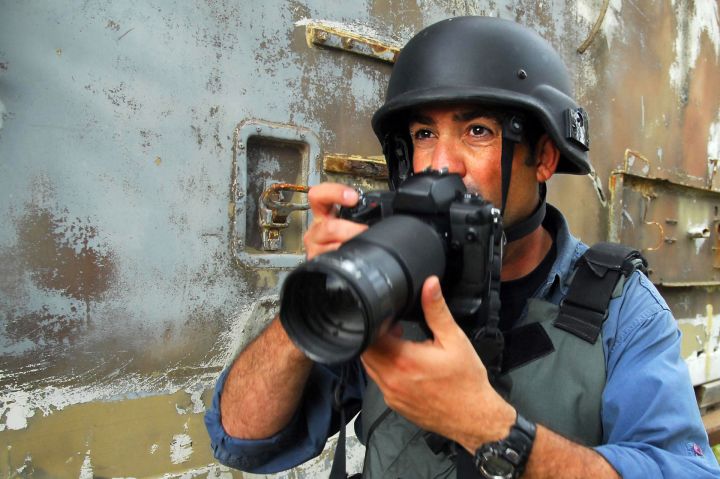
“This rates on the same level as covering the revolution in Cairo,” Timothy Fadek, a freelance photographer, told Wired.
Fadek isn’t alone. Spencer Platt, a Getty staff photographer with more than 20 years experience covering international conflicts, also weighed in on the situation. “I’ve been reading about Cleveland for the past few days, and it looks pretty rough,” he said.
Political protests at national conventions are nothing new, but this year’s RNC is unique. Trump’s particular brand of conservatism is polarizing, and violence has broken out at his events in the past. Much of the concern also comes from Ohio’s open-carry laws, which both Cleveland police and RNC organizers tried, and failed, to suspend for the convention. Several organizations plan to be in attendance and exercise their right to carry firearms, including the Black Panthers, Hells Angels, and multiple white nationalist groups. “It’s more dangerous than ever,” Platt said.
Open carry questions at presser: Ohio is an open carry state. Rules still apply. You may not threaten or menace anyone with a firearm.
— Cleveland Police (@CLEpolice) July 18, 2016
Not all photographers share Fadek and Platt’s concerns, however. Andrew Lichtenstein, a freelancer, worried that wearing protective gear could create a dissonance between the press and the audience. He added that “most of these situations are overblown.” He also told Wired it’s easier to run from trouble without the weight of protective gear slowing him down.
One thing they all seem to agree on: not showing up wasn’t an option. Any potential conflict and the stories behind it only make the role of photography even more crucial. Documenting history as it unfolds is an important task, and senior photojournalists are certainly not strangers to the risks involved.
Fadek and Platt arrived in Cleveland early and plan to assess the situation as it evolves. As of now, things look relatively calm. Nobody wants to wear more than what’s necessary, but as always, it’s better to have something and not need it, than need it and not have it.



